Start and Grow Your VOD Streaming Platform With 1000+ Features & 10+ Revenue Models.
Book a Free DemoVOD Vs OTT Streaming: What’s The Difference?
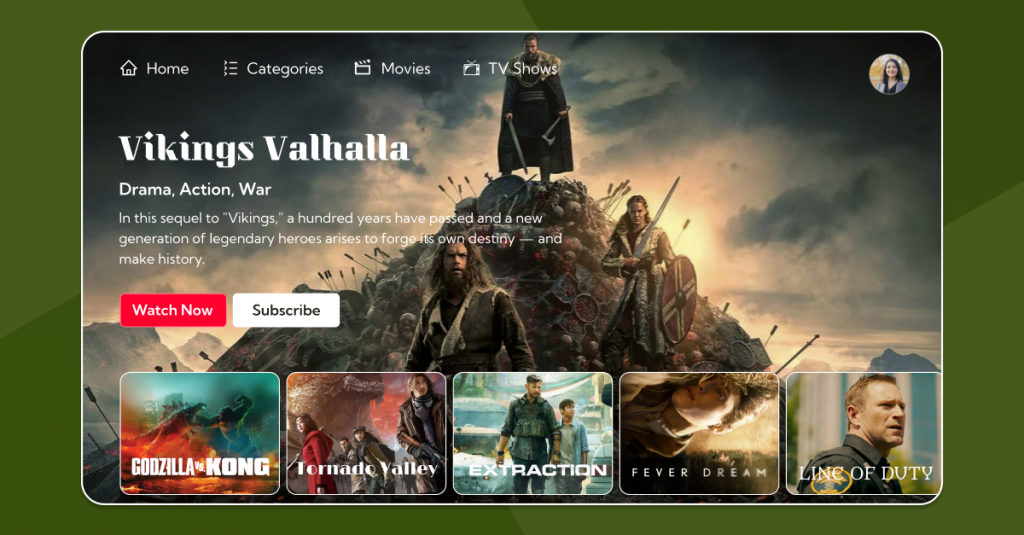
Summarize this article via
Are you weighing up OTT vs. VOD but unsure which one is best for distributing your video content?
Both Over-the-Top (OTT) and Video-on-Demand (VOD) can do many things and may look similar, but they are fundamentally different.
Understanding the differences means investing in the right infrastructure, targeting the intended audience, and choosing the right platform.
For content creators and broadcasters, understanding the differences means laying the strong foundation for every decision.
In this blog, we’ll explore the differences between VOD and OTT streaming to give you a thorough understanding of this topic.
- Fully Customizable
- Lifetime Ownership
- On-Premise/On-Cloud
- 100% White-label
- Zero Revenue Share
- Hire Developers
Table of Contents
What is Video On Demand?
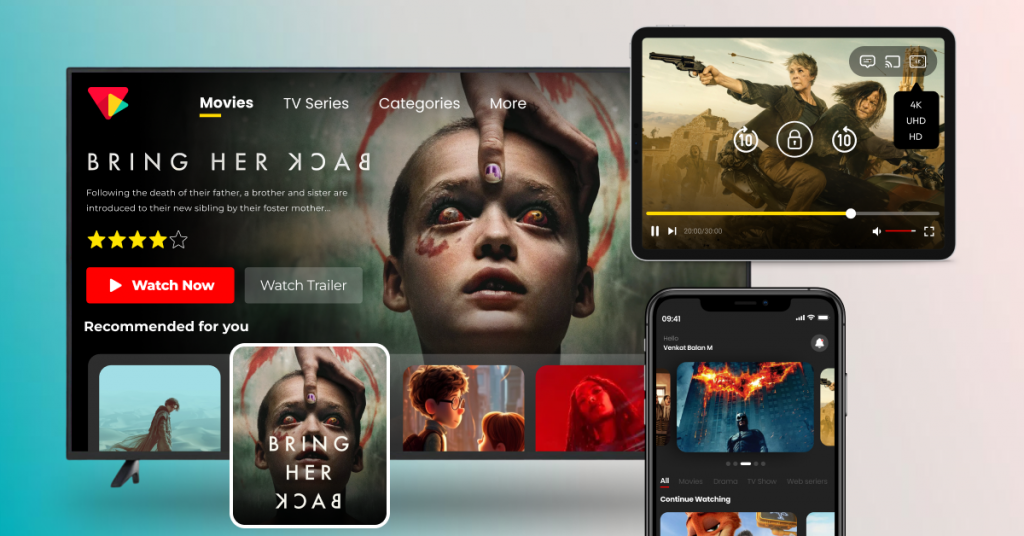
Video on Demand (VOD) is a popular distribution system that allows users to watch their favorite movies, TV shows, or any video content at their convenience, rather than sticking to the broadcaster’s schedule.
For content creators and owners, this presents a simplified opportunity to distribute video content. If you’re teaching a fitness course, running a training session, or even making movies, VOD lets you store, manage, and share videos exactly how you want.
But you need a good video content management system to store and deliver videos. This can help you maximize your video assets.
Most importantly, VOD serves its purpose in multiple industries, from healthcare to education, fitness to corporate training programs, and so on.
✨Read Also: What Is Video Streaming & How Does Video Streaming Work? ✨
How Does Video On Demand (VOD) Work?
Video on Demand (VOD) works by storing pre-recorded content on centralized servers, allowing users to stream anytime, from anywhere. The content is delivered through a versatile HLS video player, powered by the best video streaming services with adaptive bitrate streaming (ABR) for optimal playback.

As VOD platforms continue to grow, many content owners adopt a VOD business model, a structured approach to distributing, managing, and monetizing on-demand video libraries for predictable and scalable returns.
Here’s the step-by-step breakdown of working process of Video on Demand (VOD):
Step 1: Content is stored on centralized servers as digital files, where it is transcoded to suit different devices and network conditions.
Step 2: A user clicks ‘play’ to access the video of their choice on the VOD platform or website.
Step 3: The VOD website sends the content from its servers to the user’s device. When you build a VOD website, ensure that it has built-in capabilities for effective transmission of video content over the internet.
Step 4: The user’s device receives video files in data packets, decodes them, and plays the video for the user.
Step 5: The user can watch the content, control the playback as they wish while accessing the video.
VOD is an efficient distribution model for content owners who seek complete control over their video content. VOD also helps them scale up their video content operations as the target audience base grows.
Advantages Of Video On Demand
- With the invention of videos in this era, people tune-in to have their showtime by watching more and surfing less.
- VOD has changed this outlook by not only watch content of their preferences, but also allow to download or record shows to have later options of watching
- VOD is associated with any kind of video content when you push play without any need for physical DVD or player for initiating the process .
Cons of Video On Demand
- Some VOD services come with regional restrictions that limit global access for certain videos.
- With so much content on VOD, users might get overwhelmed trying to choose what to watch next.
- High-quality streaming needs strong internet connection, or else the viewing gets disturbed with buffering.
What is OTT Streaming?
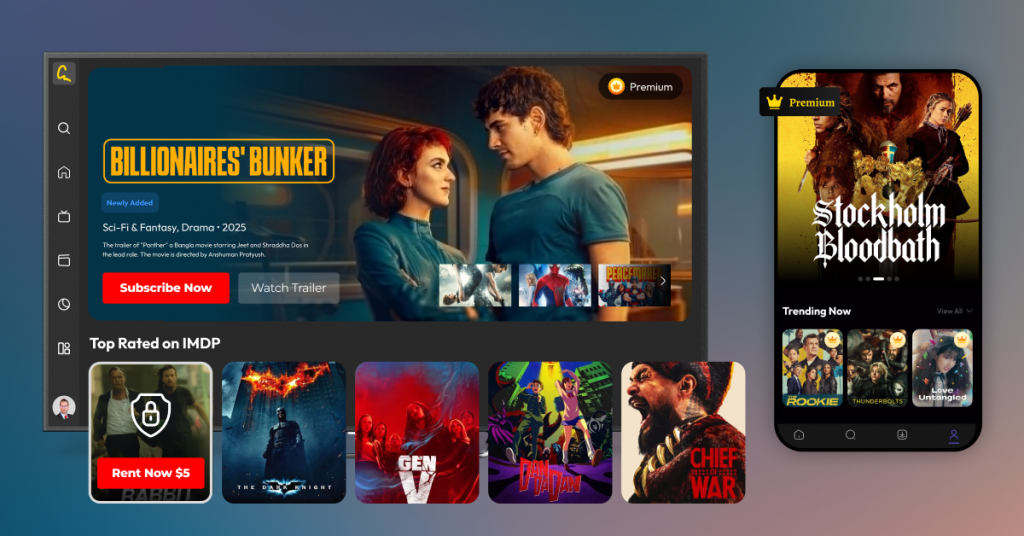
OTT (Over-the-Top) streaming is the way to stream video and audio content online without relying on traditional cable or satellite TV providers.
These services allow you to stream anytime, anywhere using devices like smartphones, smart TVs, tablets and computers.
Unlike traditional broadcasting, OTT platforms don’t have closed networks so you can choose what you want to watch and when.
While OTT is known for video streaming, it also includes other internet based services like VoIP calls, messaging apps and audio content. Think about Netflix, Amazon Prime Video, Hulu, WhatsApp and Skype.
OTT and VOD often overlap, but there is a subtle difference:
- OTT is the delivery method; streaming content over the internet.
- VOD (Video on Demand) refers to content users can watch at their convenience.
In short, OTT platforms allow viewers to access on-demand videos, live streams, or entire content libraries without needing a cable subscription. All it takes is an internet connection and a compatible device.
How Does OTT Work?
When people search what is OTT streaming, it is abbreviated as over-the-top where services by media outlets deliver various kinds of streaming on a daily basis which wasn’t the case before.
The broadcasts in OTT are delivered over the internet versus traditional cable & satellite services. best video streaming platforms such as Netflix, Hulu, Sling, Disney+ define this wide platform.
Over-the-top is the next best choice since broadcasting gets cheaper for businesses and they are restricted to a certain time of streaming, in which consumers cannot access once the real-time stream gets over.
Looking To Build Your Own VOD Platform?
Start and Grow Your Video Streaming Service With 1000+ Features & 10+ Revenue Models.
Highly Customizable
Life Time Ownership
Own 100% of Your Revenue
Full-Branding Freedom
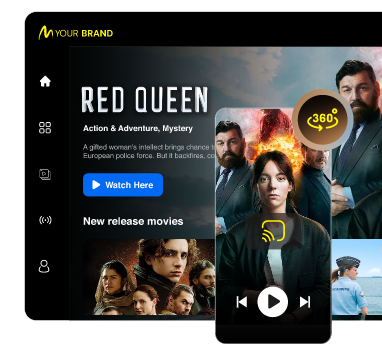
Advantages Of OTT
- Online Video Platform are quite specific in terms of requirements that they provide. Their way of working in efficient system of video playback gives better streaming quality
- Moreover, the biggest difference between OTT and VOD comes into play when you know they aren’t providing only video content but also offer audio broadcasts like podcasts.
- Specially, when you watch a movie from any top online video platforms, you’re not bound to download those files, rather enjoy every bit of streaming right from start to finish
Cons of OTT
- OTT platforms require continuous internet connection to function smoothly without any interruptions.
- Since OTT content is often global, content licensing might cause sudden unavailability of shows in your region.
- Not all OTT services are free, and premium plans can cost more over time compared to traditional TV.
Also, in the upcoming segments where OTT and VOD major differences are sketched in detail.
One cannot ignore the significant aspect of transmitting data that gets common between the two in contrast to traditional or cable TV networks.
Types Of VOD Monetization Models
VOD Monetization models generate revenue from video on-demand (VOD) content and include models like Subscription (SVOD), Advertising (AVOD), and Transactional (TVOD).
While all three models deliver on-demand content, they differ significantly in how they charge viewers and generate revenue. Here’s a breakdown of each:
Subscription Video On Demand (SVOD)
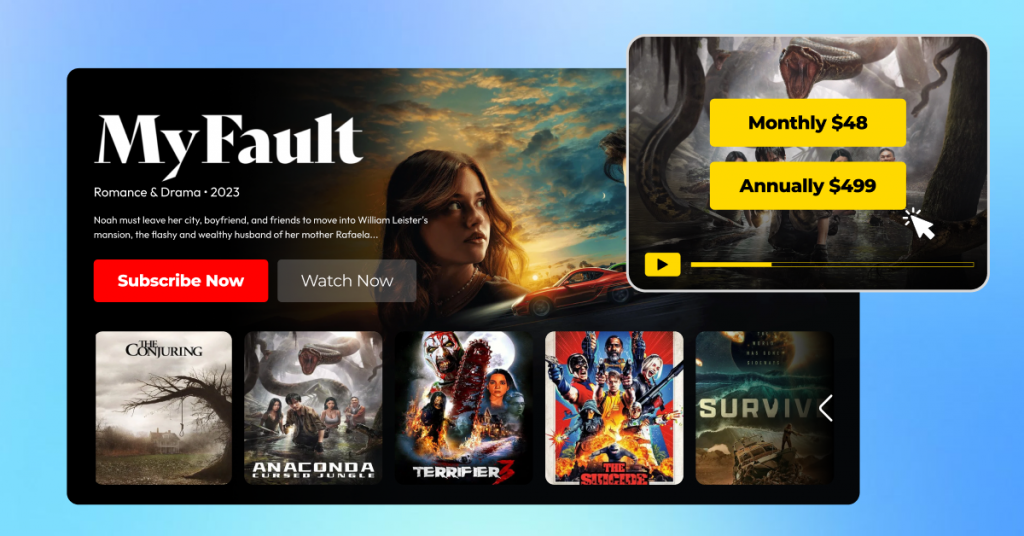
Subscription Video on demand offers unlimited access to the content library in exchange for a recurring subscription fee from the viewers.
This model offers ad-free viewing experience for viewers, enabling them to enjoy immersive viewing experiences.
For content owners and broadcasters, this subscription model guarantees predictable revenue consistently.
But here’s the catch: one should invest heavily in producing high-value content that persuades viewers to pay in subscription.
Transactional Video on Demand (TVOD)
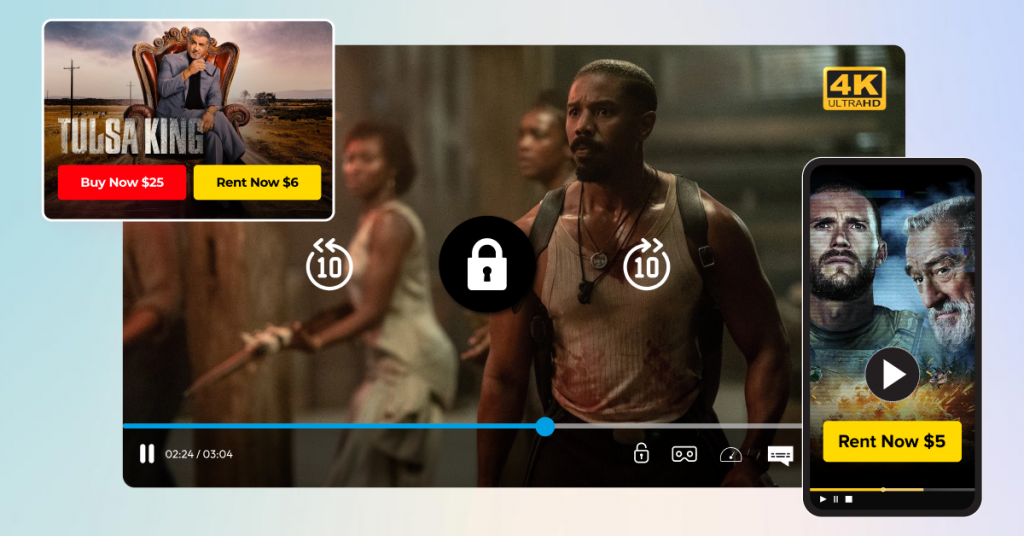
Transactional (TVOD) is synonymous with the pay-per-view model, which offers time-limited access to specific content for a one-time fee.
This model takes subscription commitment out of the equation, enabling occasional viewers to enjoy specific content.
For content owners and broadcasters, this pay-per-view model allows you to serve exclusive content lovers. This model is suitable for broadcasting live sporting events, music concerts, new releases, or niche content that doesn’t fit in the subscription model.
Advertising Video On Demand (AVOD)
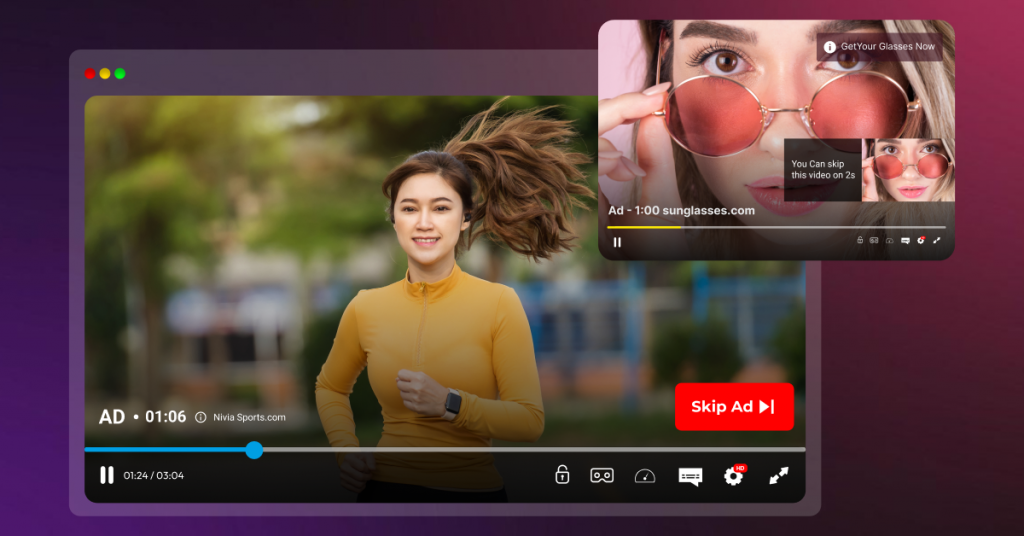
Advertising Video on demand works on offering content for free in exchange for advertisements in between. This model helps content owners reach a broader audience without levying direct fees on viewers.
However, strategically integrating the advertisements at tolerable volume is the key in this model. If you bombard the video content with advertisements, people will move away from the platform.
OTT vs. VOD: What Is the Difference?
OTT and VOD represent distinct facets of digital content delivery. OTT employs internet transmission for private live broadcasts, while VOD utilizes diverse mediums, including cables and satellites.
Unlike OTT’s emphasis on live content, VOD focuses on pre-recorded videos. Understanding these differences is crucial for businesses and content creators.
It gives them a chance to understand their audience better and create content accordingly.
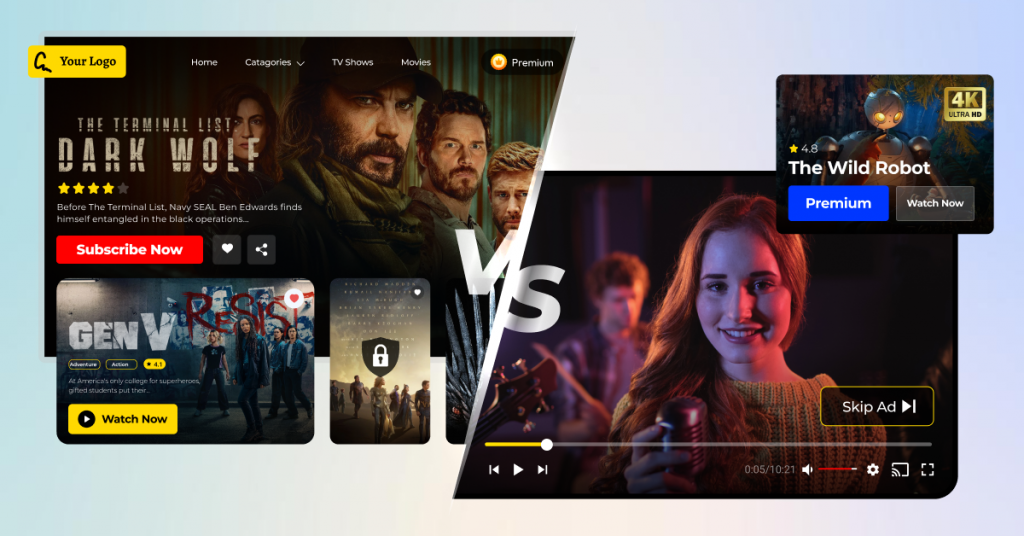
Wait, OTT Vs VOD aren’t the same?
Certainly, they stand as unique streaming services. OTT, commonly known as Over-The-Top, delivers data via the Internet, providing exclusive live broadcasting experiences to users.
Conversely, VOD, which stands for Video on Demand, employs a range of mediums such as cables, satellites, and the Internet for data transmission.
Unlike prioritizing live broadcasts, VODs primarily showcase a rich array of pre-recorded videos. However, with the help of a live to VOD platform, one can always save live videos for later.
The terms OTT and VOD have been used interchangeably to the point where differentiation has become challenging.
Some OTT applications and vod streaming services blur the lines between the two, leaving us somewhat disoriented in the process.
It is important to note that both technologies are currently under constant development and are increasingly merging as many streaming companies combine the best of both worlds .
OTT vs VOD Streaming: 4 Key Differences
| Over-the-top Or OTT | Video On Demand Or VOD |
| 1.This type of broadcasting uses the internet or satellite/cable services to transmit curated content.. 2.Online live events, sports, seminars, etc., are showcased using an OTT app. 3.OTT describes the distribution model where video content is delivered via the internet4.The best part about OTT is that its offerings are focused on consumer-facing media services. | 1.As the name suggests, it is available on-demand and allows viewers to watch playbacks anytime. 2.Real-time relays are not part of VOD unless they are packaged as on-demand content after live streaming. 3.VOD describes the consumption model where video is accessed as and when requested.4.VOD is applicable across various industries and sectors. |
The above factors are key indicators that set differences and are found beneficial since television broadcasting is quickly becoming obsolete.
Furthermore, it is a perfect takeaway for several content broadcasters.
We can say this without any doubt because it allows your customers to watch videos at their preferred conveniences, on multiple devices, free or paid, etc. With the growing demand for on-demand entertainment, many businesses are now choosing to create a streaming app to engage wider audiences.
Closing Thoughts: Does It Really Differentiate Big Between The Two?
In conclusion, we have explored the main differences between OTT and VOD streaming, delved into their distribution model, performance, and the context in which each is most effectively utilized.
Both OTT and VOD distribution models are helpful for content creators and broadcasters. Understanding the distinction between OTT vs. VOD helps address different layers of your streaming business.
If you’re looking to monetize your content effectively, consider using a video monetization platform that supports both OTT and VOD capabilities. Trying out demo versions of such platforms can also give you better clarity on which model suits your business best.
- Request Demo Book a Live, Personalized Demo
- Contact Sales Reach Out to Our OTT Experts
Frequently Asked Questions (FAQ)
1. What Is OTT And How Does It Differ From VOD?
OTT delivers video and audio over the internet, including shows, podcasts, and concerts. VOD lets users choose and watch videos anytime. Netflix is an OTT platform, while personal libraries or downloads fall under VOD.
2. What Are The Business Benefits Of Launching A VOD Streaming?
VOD platforms let users access videos instantly without broadcast constraints. Your content is always online, accessible worldwide, and you can reach global audiences using multi-lingual subtitles, making it highly scalable for content creators and media businesses.
3. How To Start A Successful VOD Streaming Service?
Start with a niche, get streaming rights, define your revenue model, and build a cross-device platform. Increase visibility through marketing. Prioritize UX, offer varied content, and understand audience preferences to ensure long-term success.
4. Why Is OTT Important For Your Business?
OTT helps meet changing viewer habits. With rising demand for exclusive content, it enables businesses to stay competitive by catering to increasing consumer needs, expanding reach, and offering value through personalized and dynamic viewing experiences.
5. What Is The Best Way To Generate Revenue From A OTT Platform?
Revenue depends on your audience, content type, and goals. Analyze market trends and viewer behavior to choose the right model; be it subscription, pay-per-view, ads, or hybrid—for consistent growth and engagement.
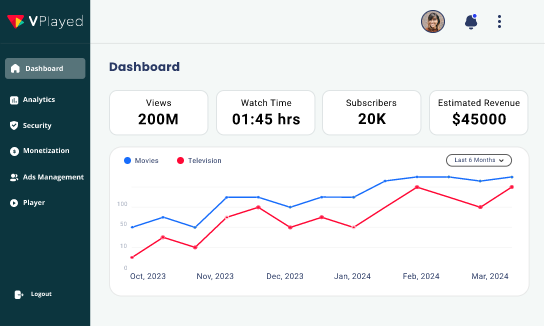
I loved the clarity in this article. As a founder in the OTT vs VOD space, I often see businesses struggle to differentiate the two.
Just wondering. when building a platform, should one start with VOD and later scale to OTT, or vice versa?
Great article! I’ve always been confused about the difference between OTT and VOD, but this helped a lot.
Appreciate the clear comparison! The difference between OTT and VOD can be confusing for newcomers. It might help to add real world brand examples under each category for more clarity.